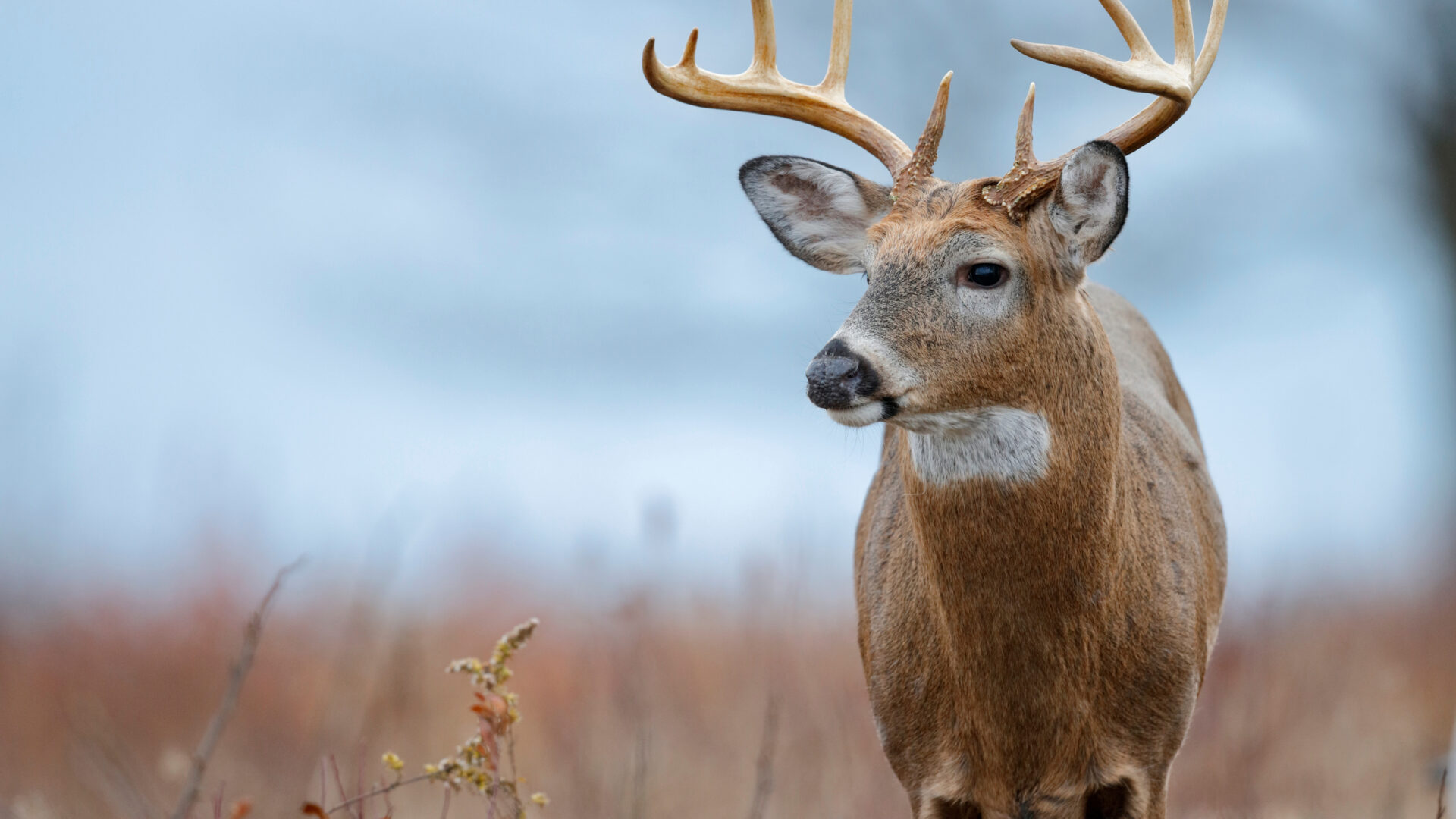Bow hunting season is already underway for deer in West Virginia, and rifle season is fast approaching. But state wildlife management officials say hunters venturing into the woods this fall should keep an eye out for visibly ill deer.
That is because the Mountain State has seen an increase in reports of epizootic hemorrhagic disease, or EHD. EHD is transmitted to white-tailed deer through insects like gnats and midges, and can be fatal.
Deer tissue samples taken from eighteen West Virginia counties have tested positive for EHD, according to Ethan Barton, state wildlife disease specialist for the West Virginia Division of Natural Resources (WVDNR).
This year’s outbreak
Barton said that positive cases of EHD were reported in tissue samples from Barbour, Boone, Hardy, Harrison, Jefferson, Kanawha, Logan, Marion, Marshall, Mineral, Monongalia, Ohio, Pleasants, Putnam, Ritchie, Taylor, Tyler and Upshur counties.
The WVDNR is also awaiting results on tissue samples from deer from several other counties. EHD prevalence varies widely between the counties, from just a single positive sample to positive reports county wide, Barton said.
EHD is a recurring problem for the state. The disease “has been detected with increasing frequency in West Virginia since the 1990s,” according to the WVDNR website.
“This outbreak was relatively widespread in the state, although we’ve certainly had more widespread outbreaks before that affected the majority of the state’s counties,” Barton said. “This isn’t necessarily anything new. This just happened to be a little bit more active an EHD year than a typical year.”
EHD is not transmissible to humans. While the WVDNR advises against the consumption of meat from visibly ill deer, Barton said deer that have survived and recovered from EHD “are going to be absolutely fine” to hunt and eat.
From the WVDNR’s perspective, EHD cases are “not necessarily anything to be alarmed about,” Barton said, adding that the biggest concern for hunters tends to be the disease’s impact on game populations.
Wintertime frost kills off gnats and midges, which removes the means of transmission for the disease. While EHD infections can still take a toll on local deer populations, that means there is an endpoint within sight.
“Even in areas where local scale deer mortality may be substantial, populations bounce back within relatively short order,” Barton said. “Within two or three years, densities come right back up to where they were before an outbreak. In a typical year with a typical outbreak, most hunters aren’t going to notice an actual difference in the number of deer they see.”
Detecting and reporting disease
EHD typically causes fever, so deer with the disease often seek to cool off in bodies of water, Barton said. Deer tissue samples are primarily collected near local watersheds, because infectious insects and diseased deer alike spend more time in these areas.
Beyond fever, other EHD symptoms include difficulty breathing and swelling of the head, neck and tongue, according to the National Park Service.
Deer that are recovering from EHD or have survived the disease may also exhibit signs of a “depleted immune system,” Barton said. Deer affected by the disease may have hoof lesions, and can struggle to combat later infections of other diseases.
According to Barton, EHD spreads from late July to mid October, but typically reaches its peak in September.
Barton said there is no significant “intervention method” the WVDNR takes once EHD is reported, beyond tracking where the disease occurs and to what scale. There is currently no vaccine or treatment available for the disease.
Meanwhile, fall is deer hunting season in West Virginia. Bow hunting began Sept. 28 and runs until Dec. 31. Buck firearm season runs from Nov. 25 to Dec. 8, and muzzleloader season runs from Dec. 16 to Dec. 22.
Barton said reports of EHD can concern hunters, especially when sick or deceased deer are highly visible in a certain area.
But he said the WVDNR encourages hunters to operate within their typical hunting area. Barton added that local deer population declines are typically not severe enough to warrant hunters traveling to other areas instead.
EHD is not the only disease to spread through West Virginia’s deer population this year.
In April, cases of chronic wasting disease among deer were reported in Jefferson County and nearby areas of Maryland for the first time. The disease is different from EHD, but also transmissible and fatal among deer.
Hunters who see deer exhibiting symptoms of EHD or other diseases can also report the sightings to their local WVDNR office. Barton said this helps the organization track the spread of the disease.
“We can kind of walk through it with them, triage out what might be going on, and investigate if need be, to determine if there's a pathogen system or communicable disease involved,” he said.
Barton said that WVDNR might not respond to every sighting because the organization is “limited in numbers.” But he said calling the WVDNR is “generally a good idea” when disease is suspected.
The WVDNR headquarters in South Charleston can be contacted over the phone at (304) 558-6200. For information on how to contact your local WVDNR office, visit the organization’s website.
